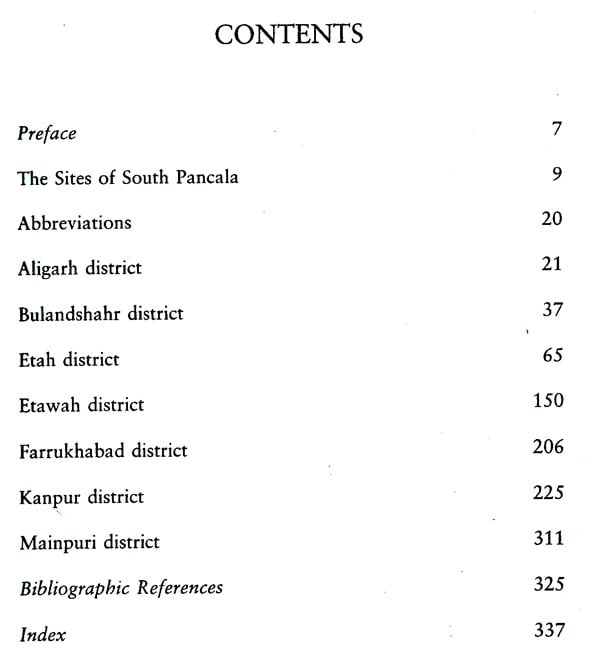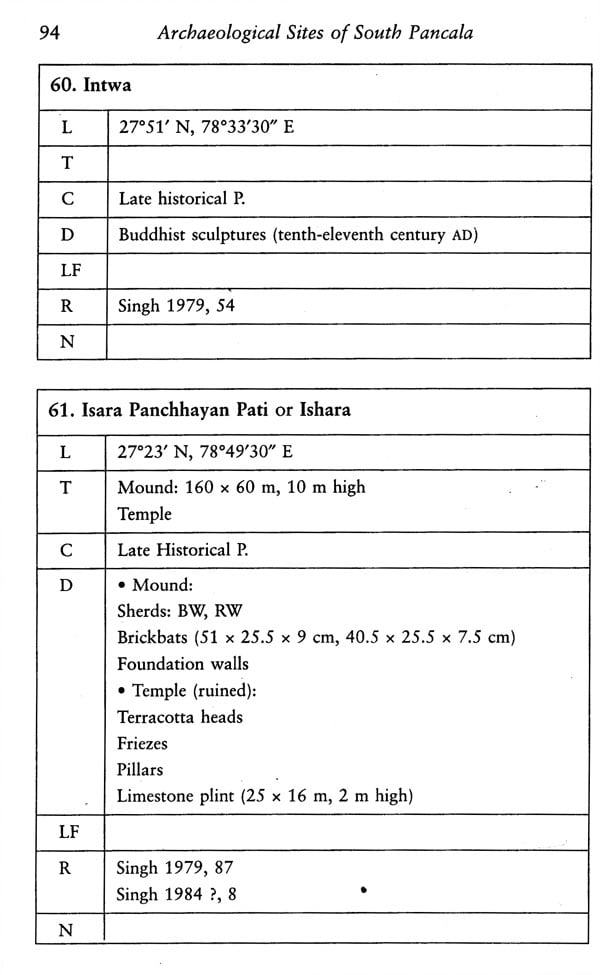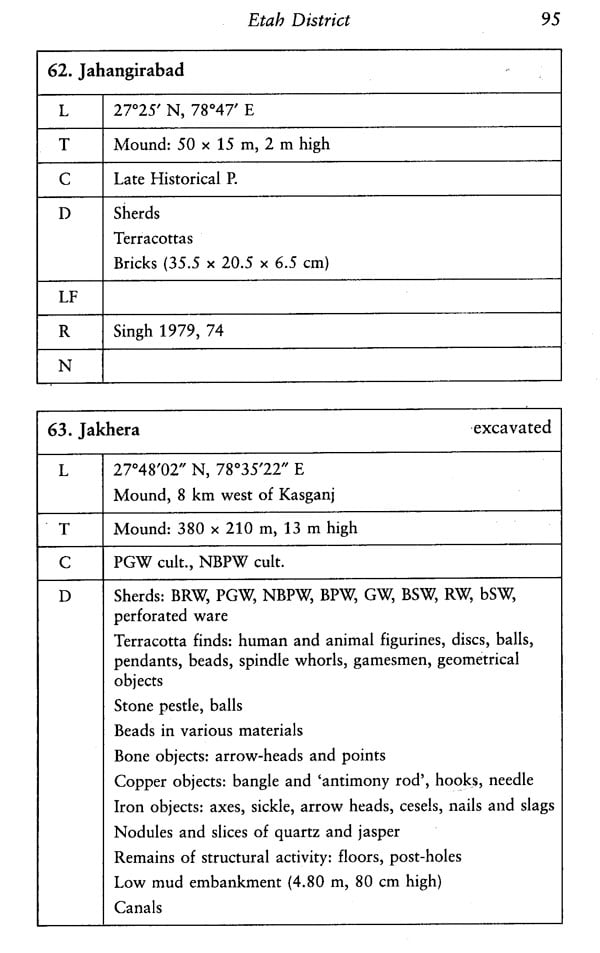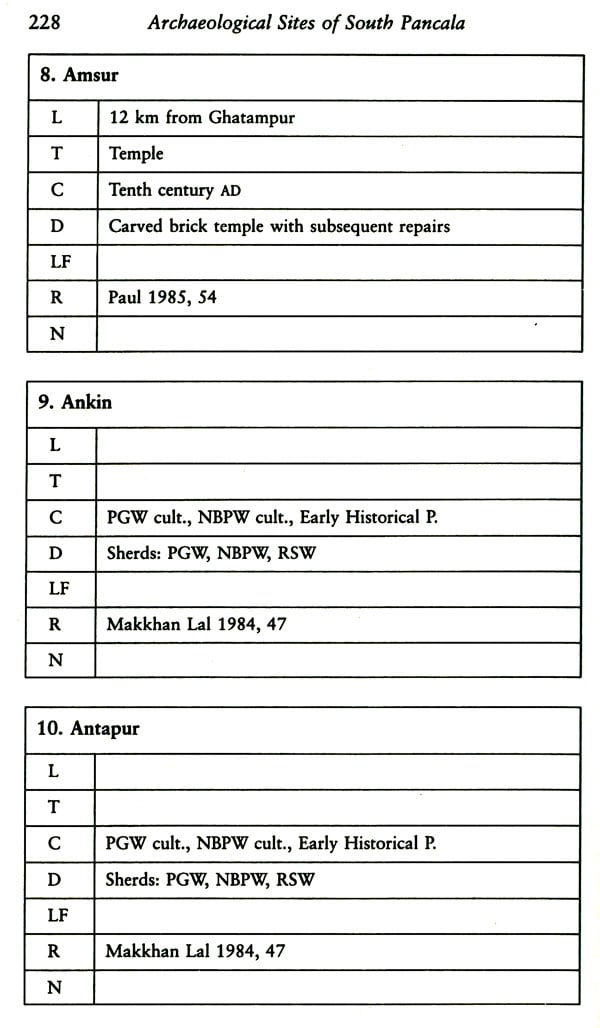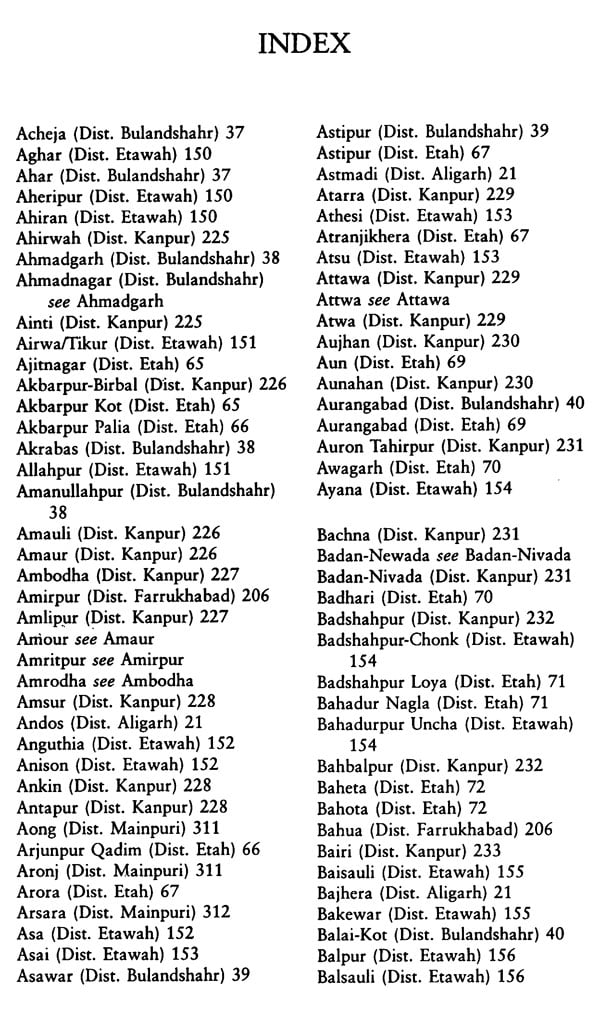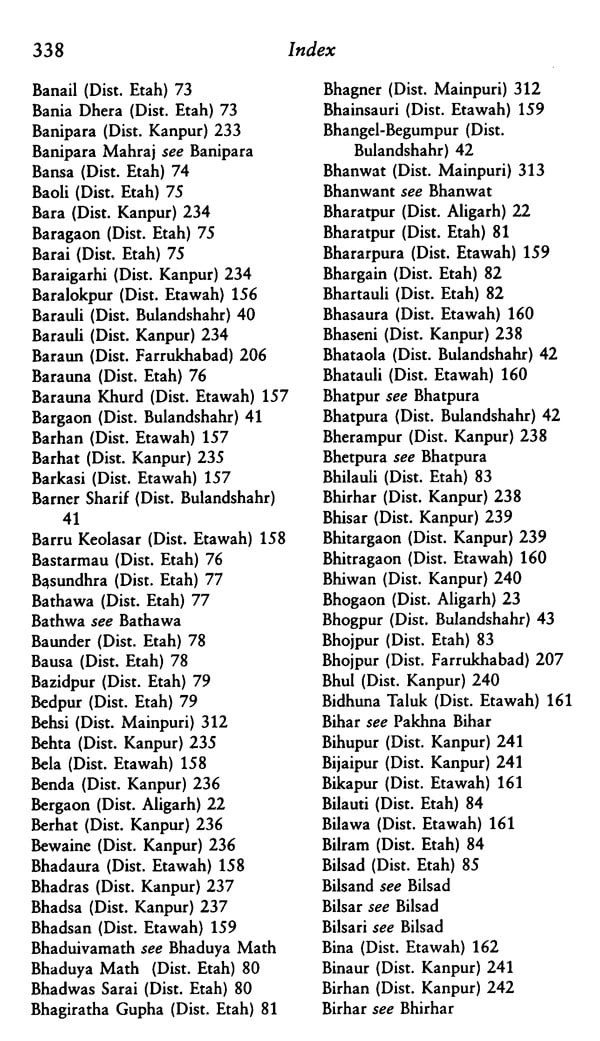
Archaeological Sites of South Panchala (Data From Archaeological and Literary Sources )
Book Specification
| Item Code: | NAZ719 |
| Author: | Annamaria Dallaporta and Lucio Marcato |
| Publisher: | Manohar Publishers and Distributors |
| Language: | English |
| Edition: | 2005 |
| ISBN: | 9788173046360 |
| Pages: | 358 |
| Cover: | HARDCOVER |
| Other Details | 9.00 X 6.00 inch |
| Weight | 600 gm |
Book Description
South Pancala, located in the present state of Uttar Pradesh holds an indisputable and significant place in the Indian history from the cultural, traditional, and archaeological angles.
The work presents all relevant information available in archaeological literature, about seven districts of the present Uttar Pradesh, viz., Aligarh, Bulandshahr, Etah, Etawah, Farrukhabad, Kanpur and Mainpuri through more than 700 file cards arranged in alphabetical order. The data presented is varied that covers significant aspects of the area over a long period of time, the changes that have taken place, their archaeological attributes, location of such sites, their types, chronology, the period, culture and description of the finds. The data is further enriched with literary and other relevant references.
The volume, thus, will be of great relevance for researchers interested in the history and archaeology of South Pancala.
Annamaria Dallaporta and Lucio Marcato are freelance Italian archaeological scholars who have, for some years now, concentrated on study of the territory of ancient South Pancala kingdom. They are associated with the Archaeological Society (New Delhi) and The Society for South Asian Studies (London).
For some years now, our studies have focused on the ancient kingdom of South Pancala.
This interest we owe to our friend, late Shri Hazarimull Banthia (Kanpur, UP), enthusiastic about and committed to all possible ways of revealing, developing and enhancing the historical and archaeo-logical potential of the site of Kampil. His contagious enthusiasm stimulated us to carry out numerous studies in the field over the years. Our aim was to shed light on the vicissitudes of South Pancala during the first millennium BC, starting with the first of many questions: had Kampil really been the capital of the kingdom?
This question rested on a contradiction: in 1887 A. Cunningham had identified Kampilya, the capital which, according to literature, had origins prior to the tenth century BC, with the village of Kampil; on the basis of the exploratory diggings carried out in 1976, however, the latter appears to have originated in the seventh century BC.
Our discussions at the Banaras Hindu University (1996) reinforced the doubts on the validity of Cunningham's hypothesis and there-fore, taking action, we decided to study the territory at both the local level (10 km around Kampil) and the regional level (South Pancala), using literature, remote sensing techniques and simple exploration, in an attempt to reconstruct the environmental and cultural context of Kampil. After an initial series of surveys, at 6 km from Kampil we discovered (with other Italian scholars) the site of Drupad Qila which in many respects still remains a mystery (Dallaporta, Marcato 2001).
Its baked brick boundary walls, the almost exactly rectangular layout and the fairly large dimensions (830 x 680 m), make this site particularly interesting, providing fresh stimuli and posing new questions.
**Contents and Sample Pages**